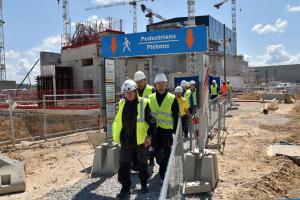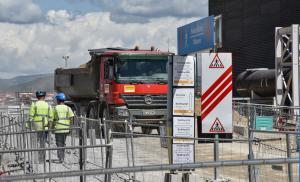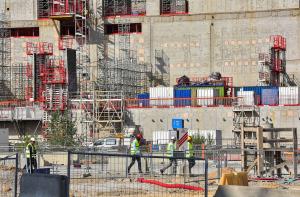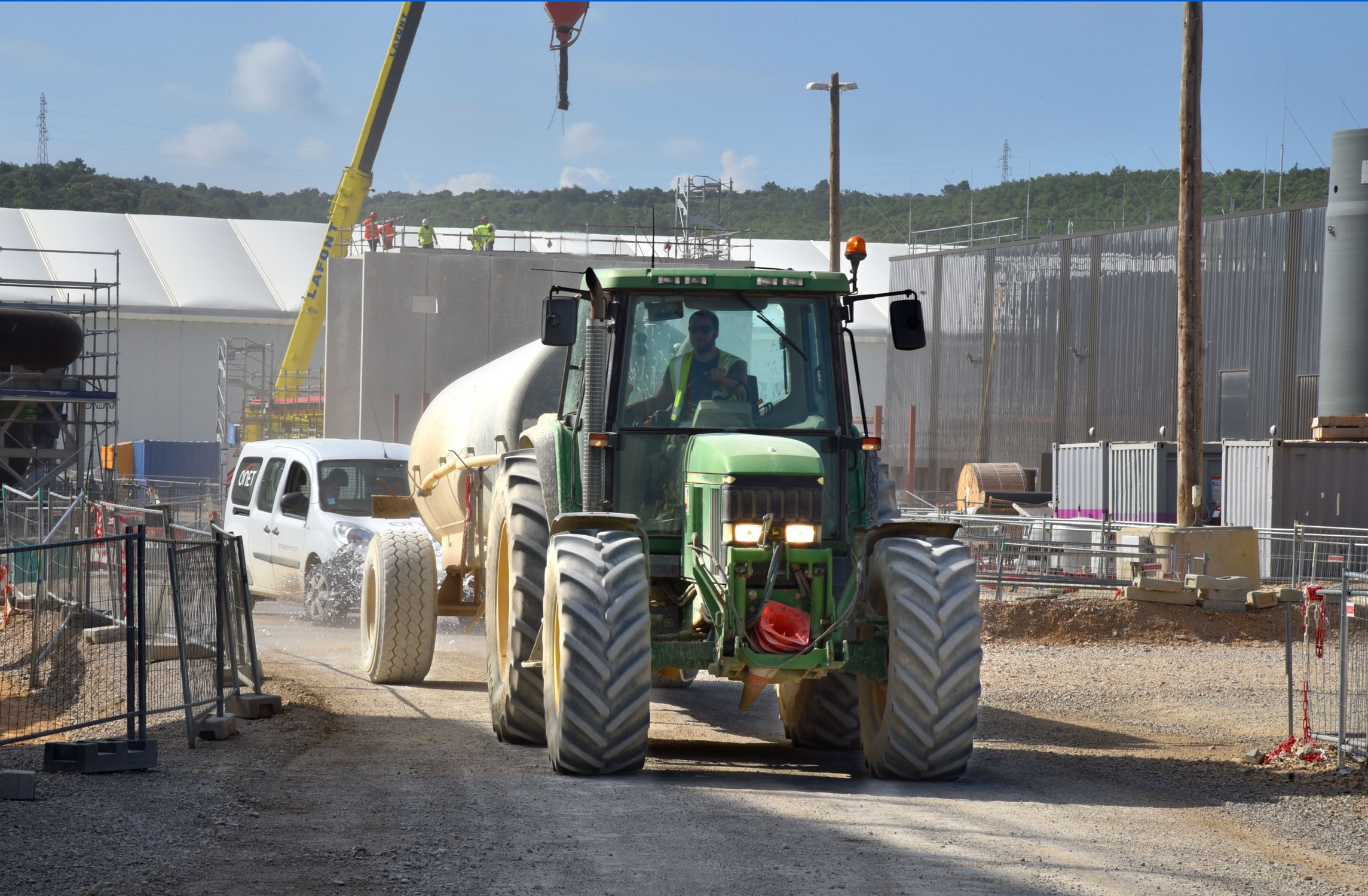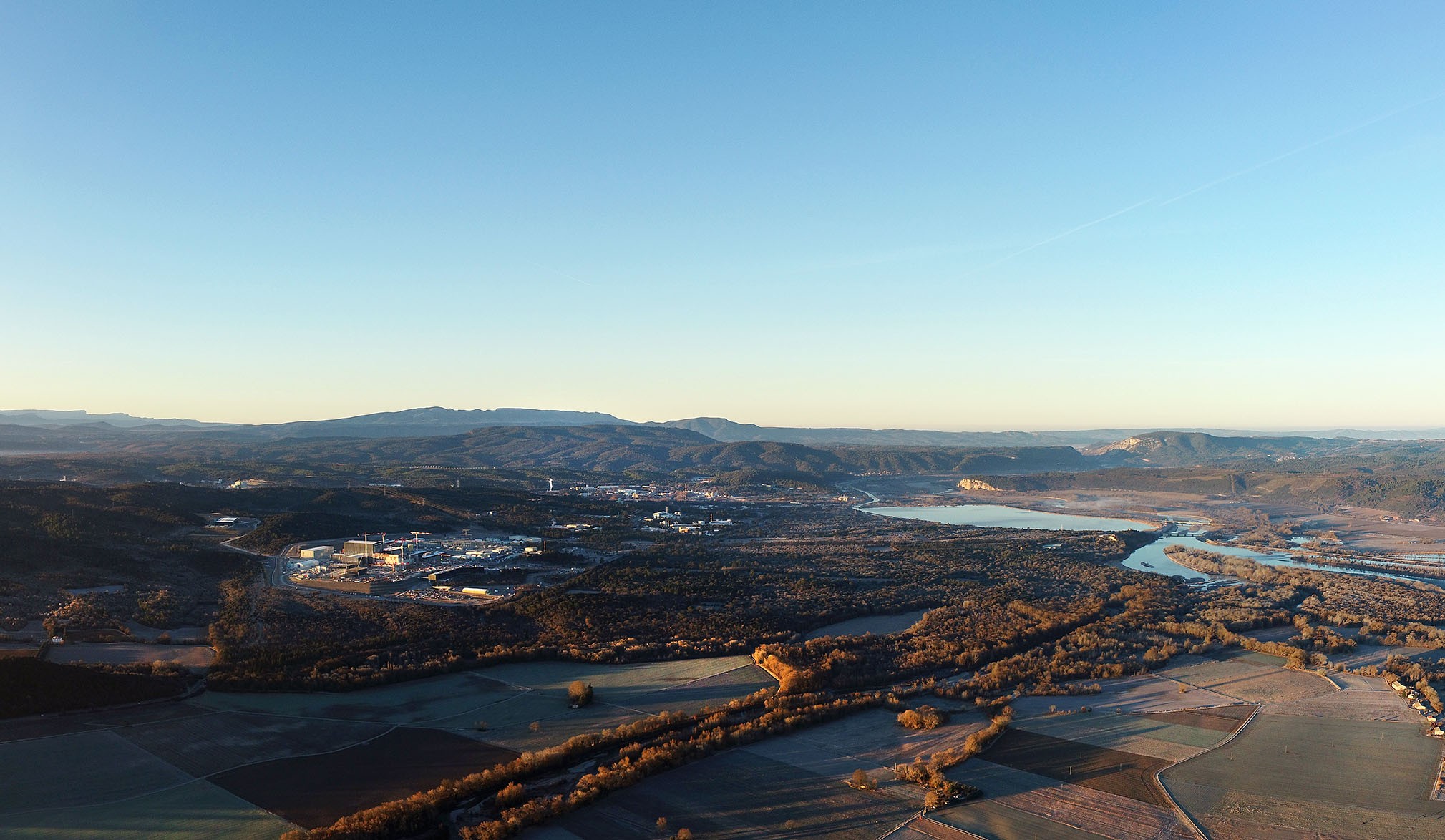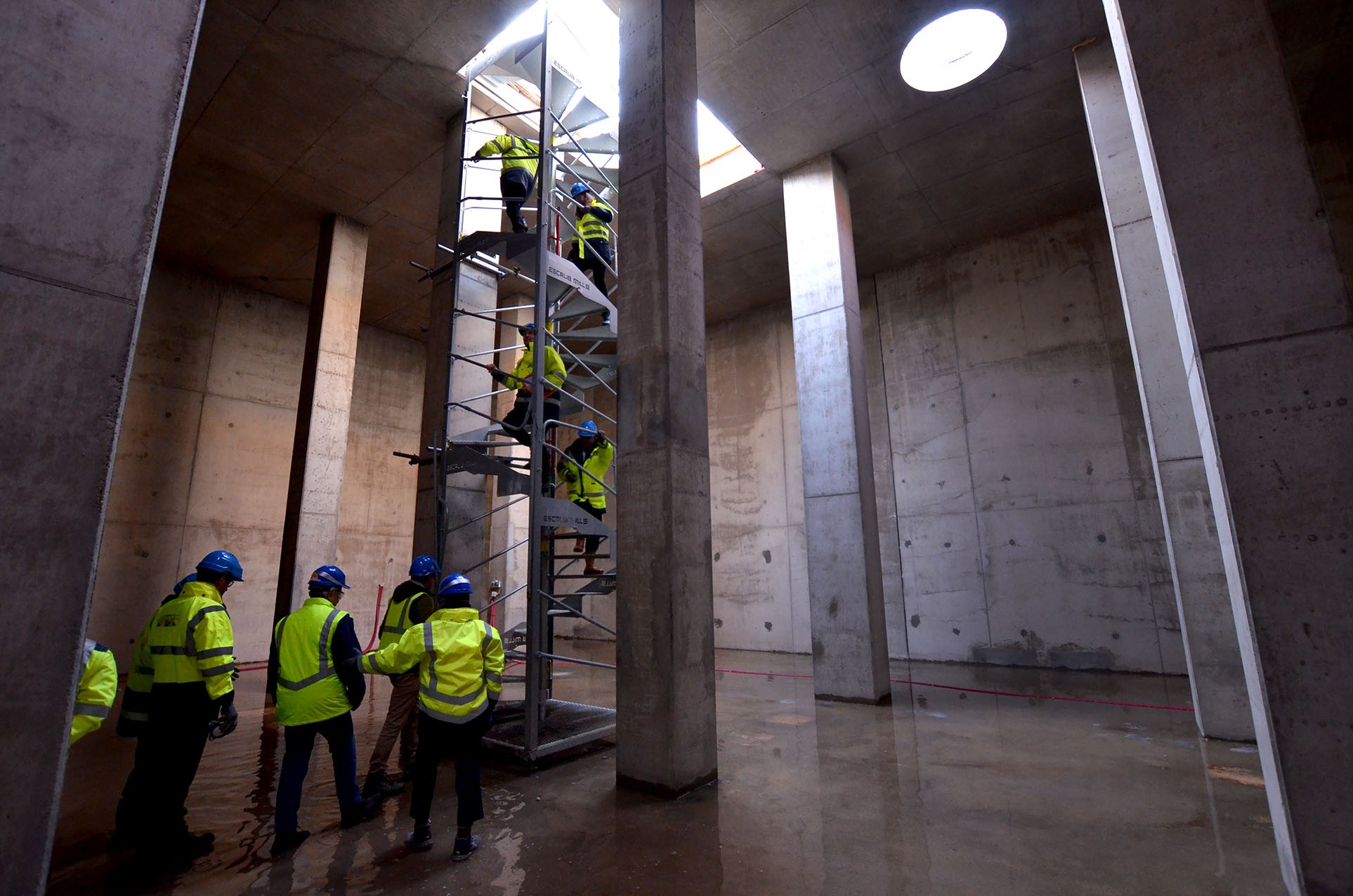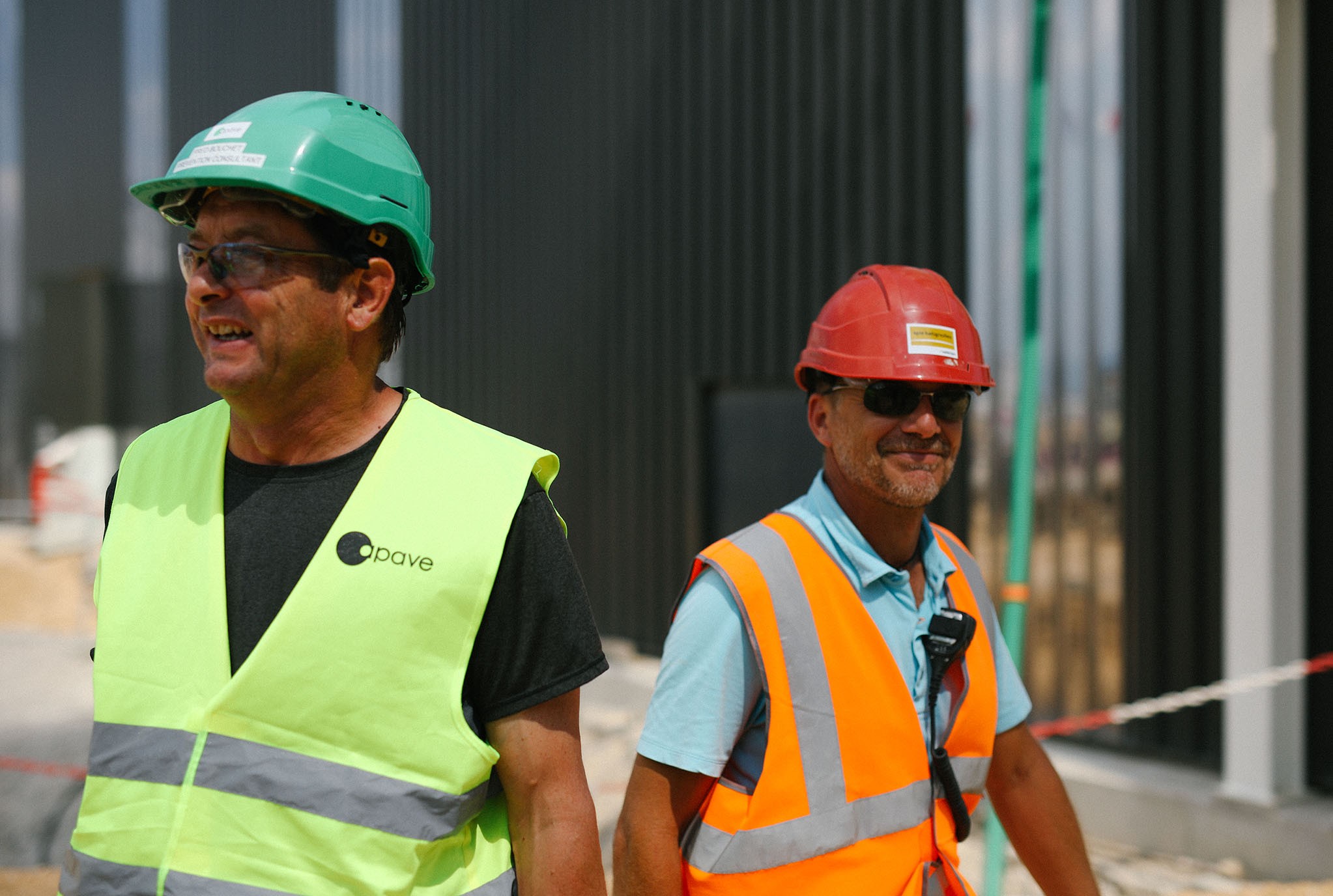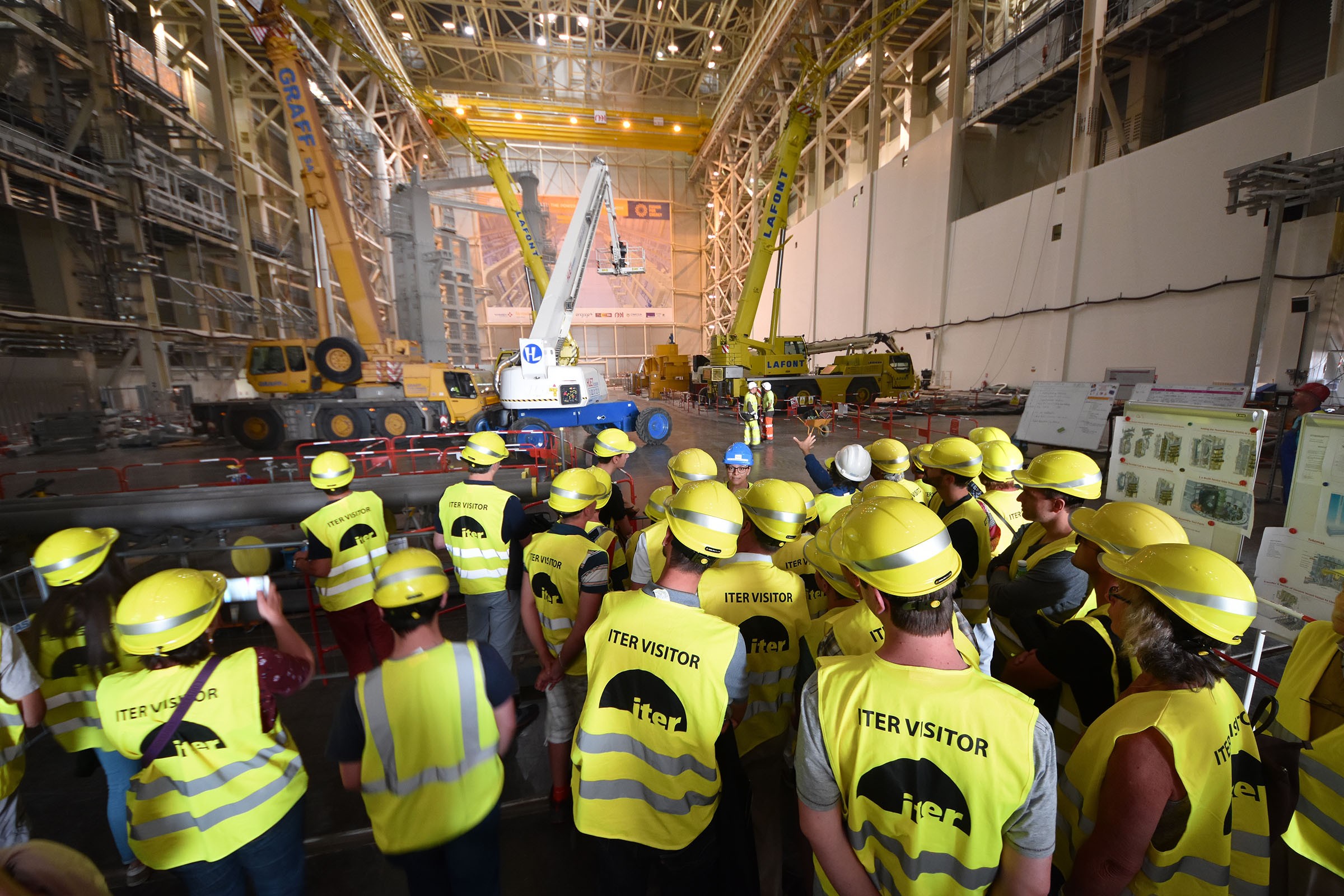Small-town ITER is not a rowdy settlement: speed limits and traffic lights are respected and safety rules scrupulously observed. However, whenever necessary, the law is there to reprimand, punish or even, on extremely rare occasions, expel.
Whereas one is free to dress as one likes in the residential part of town, simple and strict rules apply to the construction site: long pants, protective shoes and goggles, gloves, reflective vests. And of course the hard hat—green for law enforcers, blue for managers, red for foremen and supervisors, white for workers, and yellow for visitors.
Most frontier settlements become attractive to tourists long after their heyday is over and they have turned into ghost towns. However, because small-town ITER is so unique and spectacular, it draws an average of 15,000 visitors every year—government officials, an occasional prince or princess, business executives, researchers, students and schoolchildren, pensioners, and vacationing families. Most of them discover the town's landmarks through the windows of a tourist bus. The privileged few—but they amount to hundreds—take the VIP tour inside the town's most stunning monuments.
These privileged "tourists" are a challenge to the green hats whose mission is to ensure that co-activity is carried out safely and smoothly, and that all occupational safety regulations are respected. But they acknowledge that visitors are important as they spread the word about the small frontier town at the frontier of science.
A frontier town would not be complete without a mayor and a sheriff. In small-town ITER, Laurent and Georges play the parts to perfection. Although hailing from different generations (Georges is long past retirement age), they are both veterans of large nuclear projects. Laurent likens his role to that of the "conductor" of a large symphonic orchestra playing an utterly complex sheet music; Georges is an enforcer as much as a facilitator—an old-school construction hand in a futuristic project.
The day will come when the dusty, bustling frontier settlement gives way to an immaculate research centre where lab coats have replaced hard hats and yellow vests. As the ITER Project writes history, the memory of the small town that nurtured its early years will fade. But its ancient dwellers will still be on hand to tell its story and turn it into an epic saga—which, in many ways, it was.

